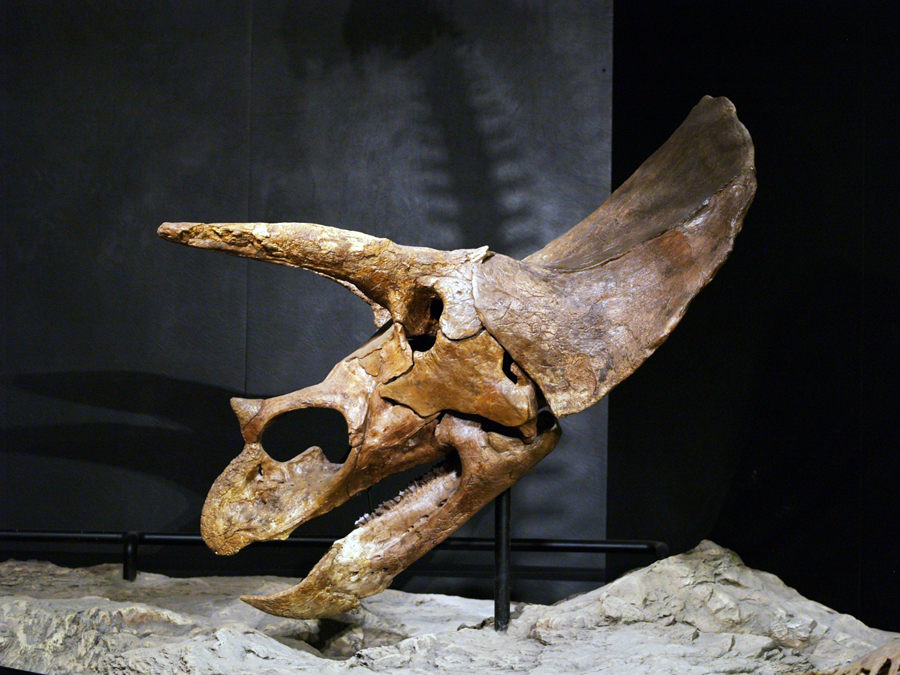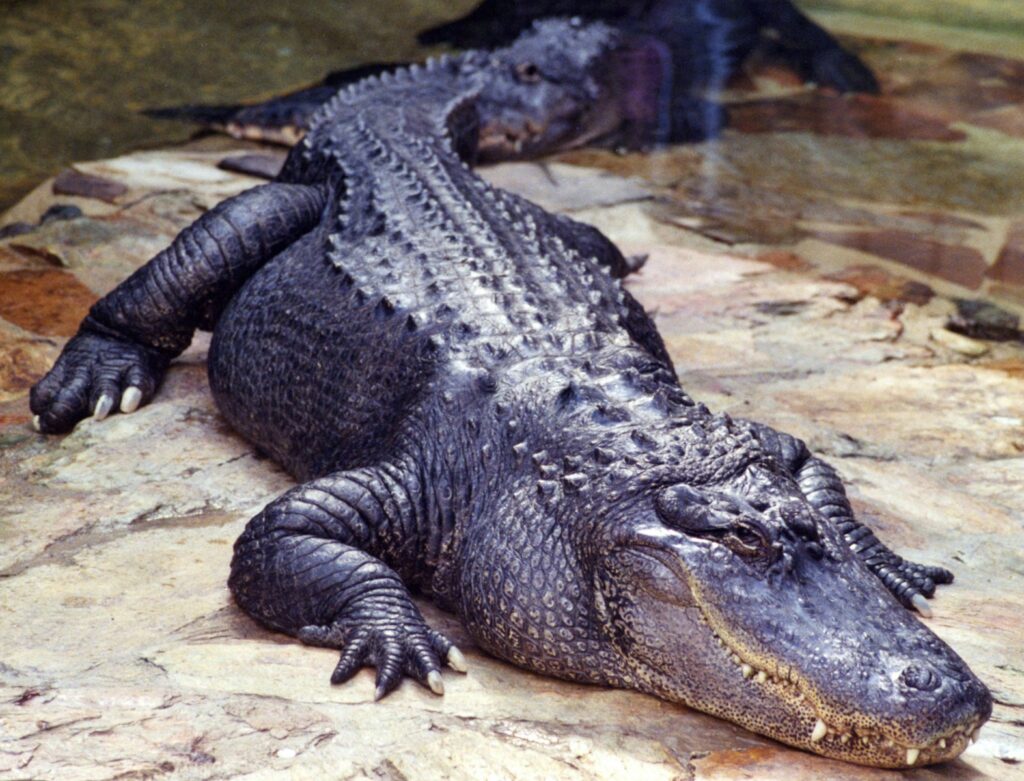Dinosaur graveyards, more scientifically known as fossil beds or bone beds, are extraordinary geological sites where prehistoric remains have been preserved for millions of years. These natural time capsules offer paleontologists and enthusiasts alike a window into Earth’s distant past, revealing crucial information about dinosaur behavior, physiology, and extinction. From massive death assemblages that chronicle catastrophic events to meticulously preserved individual specimens, these fossil-rich locations continue to shape our understanding of the magnificent creatures that once ruled our planet. Let’s explore some of the most significant dinosaur graveyards around the world, each with its unique story to tell about the Mesozoic Era.
Morrison Formation, Western United States

The Morrison Formation stands as one of North America’s most prolific dinosaur graveyards, stretching across several western states, including Colorado, Wyoming, Utah, and Montana. Dating back to the Late Jurassic period approximately 150 million years ago, this expansive fossil bed has yielded some of paleontology’s most iconic discoveries. The formation is particularly famous for producing numerous specimens of Allosaurus, Stegosaurus, Apatosaurus, and Diplodocus, many of which represent complete or nearly complete skeletons. The Cleveland-Lloyd Dinosaur Quarry in Utah, a specific site within the Morrison Formation, contains the highest concentration of Jurassic dinosaur bones ever discovered, with over 12,000 bones excavated from an area smaller than a football field. Scientists believe this area may have once been a predator trap—possibly a muddy watering hole that ensnared carnivores attracted to struggling prey.
Dinosaur Provincial Park, Alberta, Canada

Located in the badlands of Alberta, Dinosaur Provincial Park represents one of the richest dinosaur fossil locations in the world and has earned UNESCO World Heritage status for its paleontological significance. The park preserves a remarkable Late Cretaceous ecosystem from approximately 75 million years ago, with over 40 dinosaur species identified and more than 500 specimens collected for museums worldwide. What makes this site particularly valuable is the preservation of complete dinosaur ecosystems, including not just the massive herbivores and predators but also smaller creatures, plants, and evidence of ancient environments. The fossils are found in the Oldman and Dinosaur Park Formations, representing ancient river floodplains where seasonal flooding likely trapped and buried dinosaurs, preserving them for millennia. The area’s success in yielding fossils comes from its perfect combination of ancient conditions for fossil formation and modern erosion that continuously exposes new specimens.
Dashanpu Formation, Sichuan Province, China
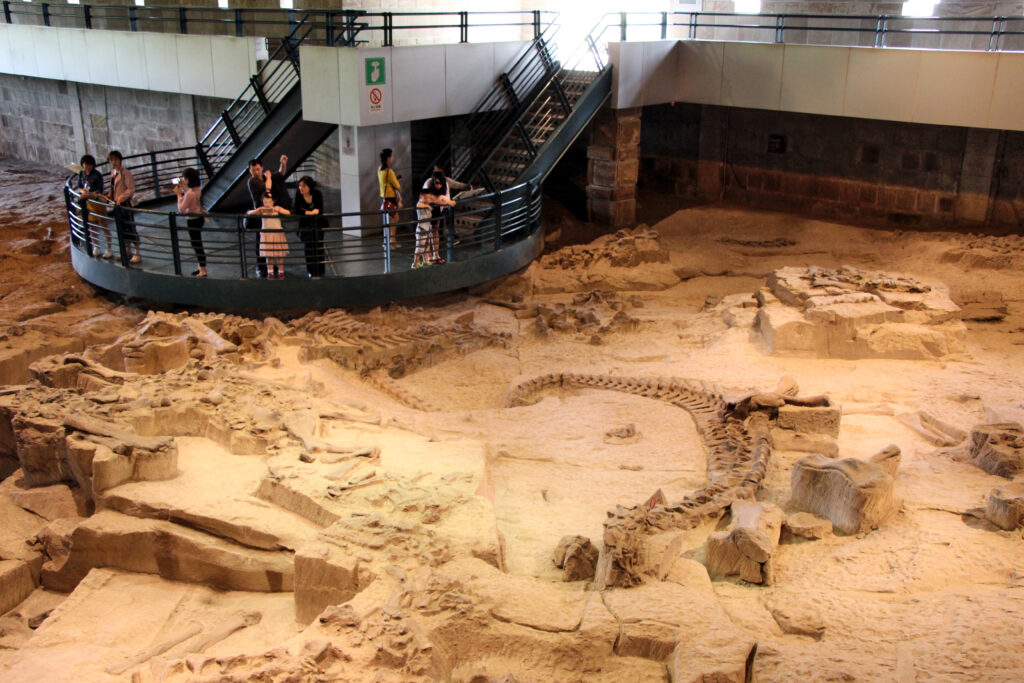
The Dashanpu Formation near Zigong in China’s Sichuan Province represents one of Asia’s most significant dinosaur graveyards, dating to the Middle to Late Jurassic period approximately 170-160 million years ago. This remarkable bone bed has yielded thousands of fossils since its discovery in 1972, including specimens of Mamenchisaurus, famous for having the longest neck of any known dinosaur, and Gigantspinosaurus, a unique stegosaur with distinctive shoulder spines. The density of fossils at Dashanpu is extraordinary, with some excavation areas containing bones packed so tightly that they touch one another, suggesting a catastrophic mass death event potentially caused by flooding or drought. Unlike many dinosaur graveyards that consist primarily of isolated bones, Dashanpu has produced numerous articulated skeletons, providing paleontologists with invaluable information about dinosaur anatomy and posture. The Zigong Dinosaur Museum now stands directly over part of the bone bed, allowing visitors to see fossils still embedded in their original positions within the rock.
Nemegt Formation, Gobi Desert, Mongolia

The Nemegt Formation in Mongolia’s Gobi Desert preserves a Late Cretaceous ecosystem dating back approximately 70 million years ago, just before the extinction event that would wipe out all non-avian dinosaurs. This harsh desert landscape, once a lush river system with forests and floodplains, has yielded extraordinarily well-preserved fossils, including complete skeletons with skin impressions, nests with eggs, and even embryos. The formation is particularly famous for producing specimens of Tarbosaurus (a close relative of Tyrannosaurus rex), Therizinosaurus with its enormous claws, and Gallimimus, the ostrich-mimicking dinosaur featured in Jurassic Park. Unlike many fossil beds formed through catastrophic events, the Nemegt Formation appears to preserve animals that died individually over long periods, offering a more complete picture of normal dinosaur life. The exceptional preservation at this site results from rapid burial in stream channels and sunes, protecting remains from scavengers and decomposition.
Lufeng Formation, Yunnan Province, China

The Lufeng Formation in China’s Yunnan Province represents one of the world’s most significant Early Jurassic dinosaur graveyards, dating back approximately 200-190 million years ago. This crucial site documents the early diversification of dinosaurs following the Triassic-Jurassic extinction event, providing a window into a pivotal moment in dinosaur evolution. The formation is particularly notable for yielding numerous specimens of prosauropods—early relatives of the later giant sauropods—including the well-known Lufengosaurus, one of the first dinosaurs described from China in the 1940s. Paleontologists working at Lufeng have discovered not just isolated bones but complete skeletons, including juvenile specimens that help scientists understand dinosaur growth patterns. The rock layers suggest an ancient environment of seasonal rivers and floodplains where animals were quickly buried in sediment after death, creating ideal conditions for fossilization.
Hell Creek Formation, Montana, USA

The Hell Creek Formation, spanning parts of Montana, North Dakota, South Dakota, and Wyoming, preserves one of the most complete records of the final days of the dinosaurs, dating from 68-66 million years ago. This formation is particularly significant because it contains the K-Pg boundary—the geological layer marking the asteroid impact that contributed to the extinction of non-avian dinosaurs. Famous dinosaurs from Hell Creek include Tyrannosaurus rex, Triceratops, and Ankylosaurus, representing the last dinosaurs to walk North America before their extinction. What makes Hell Creek especially valuable to science is the preservation of entire ecosystems—not just dinosaur bones, but fossilized plants, mammals, fish, and even insects that allow for a comprehensive understanding of the late Cretaceous world. The formation has yielded several spectacular specimens, including “Sue,” the most complete T. rex ever discovered, and “Dakota,” a hadrosaur with remarkably preserved skin impressions showing scales and soft tissue structures.
Tendaguru Formation, Tanzania
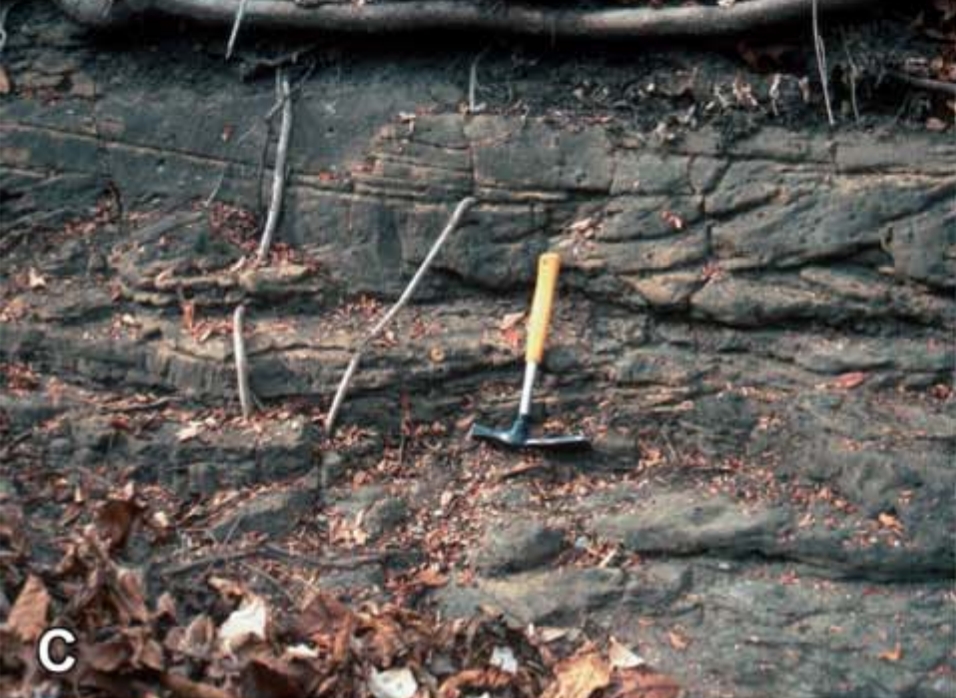
The Tendaguru Formation in Tanzania stands as Africa’s most prolific dinosaur graveyard, first excavated during extensive German expeditions between 1909 and 1913 that removed over 200 tons of fossils. Dating from the Late Jurassic period approximately 150 million years ago, this site is notable for preserving dinosaurs remarkably similar to those found in North America’s Morrison Formation, despite the continents being separated at that time. The formation has yielded spectacular specimens of massive sauropods, including Giraffatitan (formerly Brachiosaurus) brancai, one of the tallest dinosaurs ever discovered, whose mounted skeleton dominates the Museum für Naturkunde in Berlin at over 13 meters tall. Unlike many bone beds formed through catastrophic events, Tendaguru appears to represent a coastal environment where dinosaur remains accumulated over thousands of years, being transported by rivers to their final resting places. Modern excavations continue to produce discoveries, with paleontologists facing the challenging conditions of dense vegetation and tropical weather to access the fossil-rich layers.
Flaming Cliffs (Djadokhta Formation), Mongolia
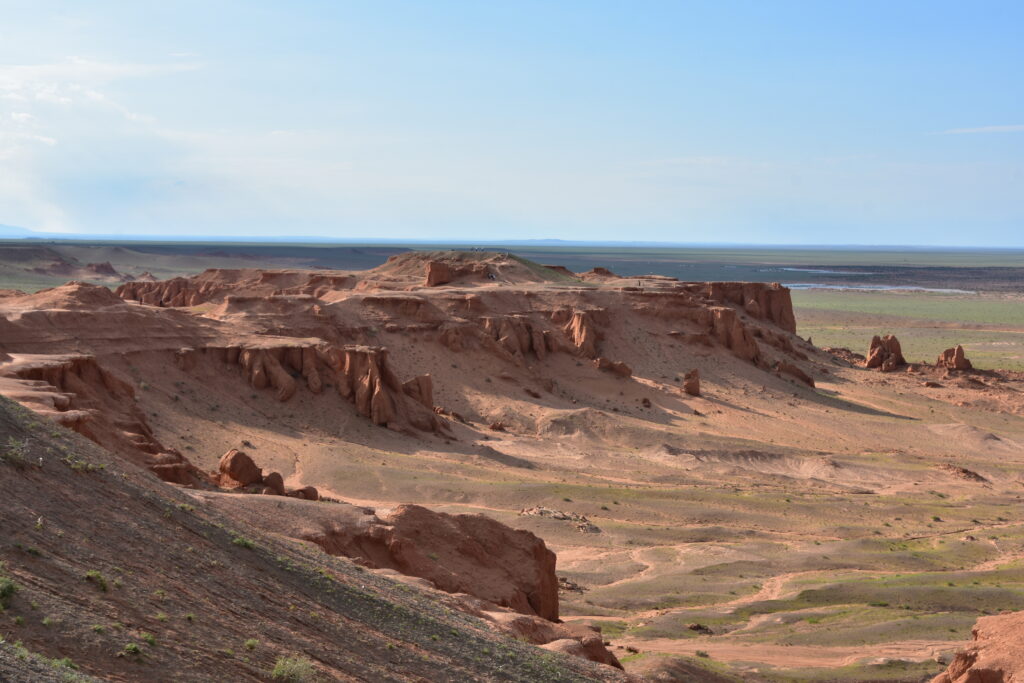
The vibrant red sandstone of the Flaming Cliffs (Bayanzag) in Mongolia’s Gobi Desert contains one of the world’s most significant dinosaur graveyards from the Late Cretaceous period, approximately 75-71 million years ago. This site gained international fame in 1923 when Roy Chapman Andrews’s expedition discovered the first dinosaur eggs ever identified, definitively proving that dinosaurs laid eggs rather than giving live birth. The Djadokhta Formation preserved at the Flaming Cliffs represents an ancient desert ecosystem with dunes and oases, containing remarkably complete fossils that were rapidly buried during sandstorms. The site is particularly renowned for its abundance of Protoceratops specimens (once thought to be the egg-layers) and Velociraptor, including the famous “fighting dinosaurs” specimen showing a Velociraptor and Protoceratops locked in combat at the moment of their death and burial. The exceptional preservation at this site extends beyond bones to include soft tissues, skin impressions, and complete articulated skeletons, providing unprecedented insights into dinosaur anatomy and behavior.
Ischigualasto Formation, Argentina

Known locally as “Valle de la Luna” (Valley of the Moon) for its otherworldly landscape, the Ischigualasto Formation in northwestern Argentina preserves one of the world’s most important Late Triassic dinosaur graveyards, dating to approximately 231-225 million years ago. This UNESCO World Heritage site captures a crucial moment in dinosaur evolution—the very beginning of the dinosaur era, when these creatures were just starting to dominate Earth’s ecosystems. The formation has yielded fossils of Eoraptor and Herrerasaurus, some of the earliest dinosaurs ever discovered, providing vital information about dinosaur origins and early diversification. What makes Ischigualasto particularly valuable is its continuous fossil record spanning several million years, allowing paleontologists to track evolutionary changes through time in a single location. The formation’s ancient environment was a volcanically active floodplain with seasonal rivers, where ash falls from nearby volcanoes frequently buried animals, creating ideal conditions for exceptional fossil preservation.
Ghost Ranch, New Mexico, USA
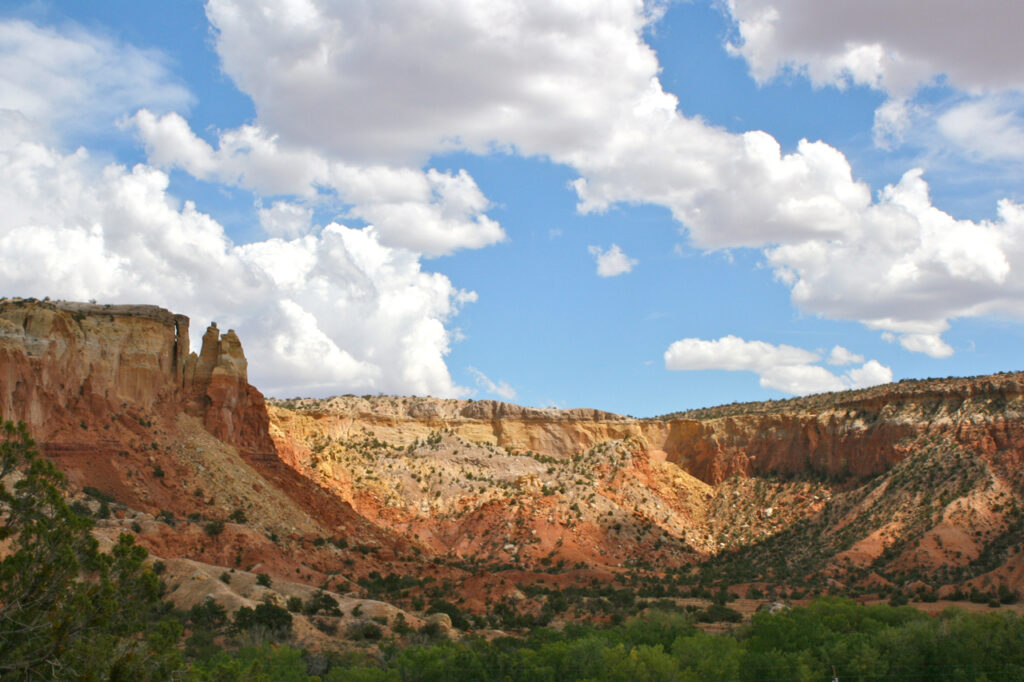
Ghost Ranch in northern New Mexico contains one of the most perplexing dinosaur graveyards ever discovered, dating to the Late Triassic period approximately 212 million years ago. This site is famous for preserving hundreds of specimens of the small carnivorous dinosaur Coelophysis bauri, many in articulated, complete condition, packed together in an area smaller than a tennis court. The unusual concentration of a single species suggests a catastrophic mass death event, possibly a drought that attracted animals to a diminishing water source, followed by a flash flood that buried them en masse. First excavated in 1947 by Edwin Colbert, the Ghost Ranch bonebed has provided so many specimens that complete Coelophysis skeletons are displayed in museums worldwide, making it one of the best-studied early dinosaurs. The exceptional preservation extends to stomach contents in some specimens, revealing that these dinosaurs occasionally practiced cannibalism by preying on smaller members of their species.
La Brea Tar Pits, California, USA

While primarily known for its Ice Age mammals, the La Brea Tar Pits in Los Angeles also preserve dinosaur-era fossils, though not of dinosaurs themselves. This unique preservation site contains natural asphalt seeps that have trapped and preserved animals for tens of thousands of years, including birds—the living descendants of dinosaurs—providing a remarkable continuity in the fossil record. The tar pits predominantly preserve Pleistocene fauna from 40,000-11,000 years ago, but deeper excavations have yielded fossils from the Late Cretaceous period, including marine reptiles like mosasaurs and plesiosaurs that lived alongside dinosaurs. Unlike traditional dinosaur graveyards that preserve bones through mineral replacement, La Brea’s asphalt provides exceptional preservation of delicate structures like feathers and plant materials that rarely survive in other contexts. The combination of both dinosaur-era and more recent fossils at a single location offers scientists a unique opportunity to study evolutionary transitions across millions of years.
Two Medicine Formation, Montana, USA

The Two Medicine Formation in Montana represents one of North America’s most significant dinosaur nurseries, preserving evidence of dinosaur reproductive behavior from approximately 75 million years ago during the Late Cretaceous period. This remarkable fossil bed has yielded the first definitive dinosaur eggs in North America, nesting grounds with multiple generations of eggs, and embryonic remains that revolutionized our understanding of dinosaur growth and development. The formation is particularly famous for Maiasaura, meaning “good mother lizard,” which provided the first evidence of parental care in dinosaurs through discoveries of nestlings at different growth stages in colony-like nesting grounds. Paleontologist Jack Horner’s discoveries at Egg Mountain within the formation revealed that some dinosaur babies remained in their nests after hatching, suggesting they were altricial (requiring parental care) rather than precocial (able to fend for themselves immediately). The preservation of entire dinosaur communities, including eggs, juveniles, and adults, makes this formation uniquely valuable for understanding dinosaur social structures and life history strategies.
Liaoning Province, China
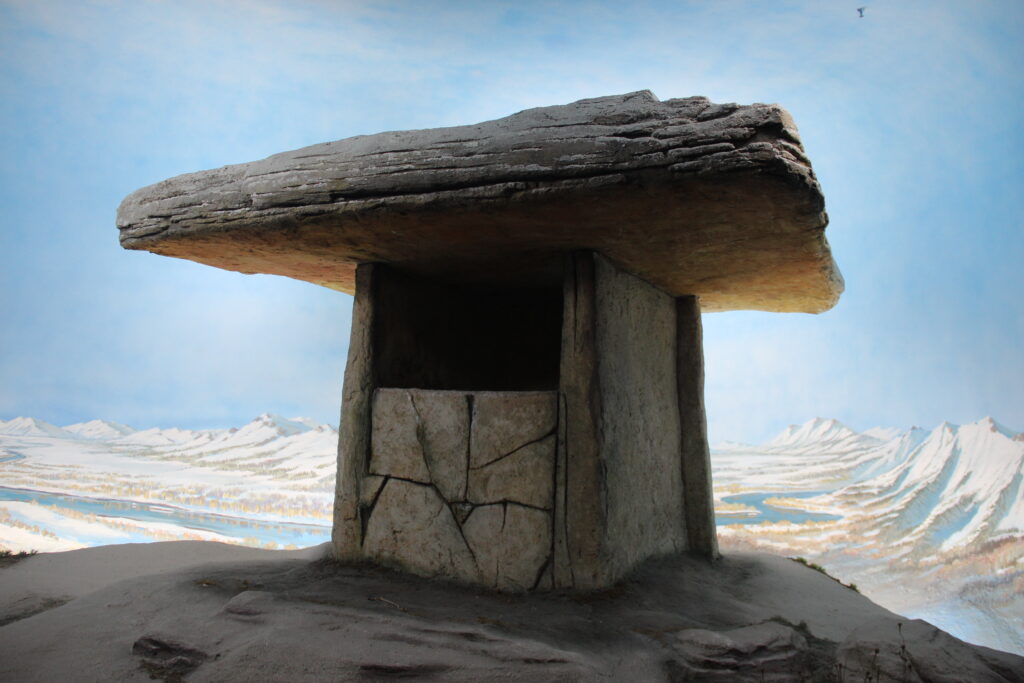
The fossil beds of Liaoning Province in northeastern China represent what many paleontologists consider the most significant dinosaur graveyard discovery of the past century, preserving specimens from the Early Cretaceous period approximately 130-120 million years ago. What makes Liaoning extraordinary is its unparalleled preservation of soft tissues, including skin, internal organs, and most importantly, feathers—definitively proving the evolutionary connection between dinosaurs and birds. The exceptional preservation resulted from a series of volcanic eruptions that instantly killed and buried animals in ash, creating fossilized “snapshots” of ancient life with soft tissues intact. Among the most famous discoveries from Liaoning are the feathered dinosaurs Sinosauropteryx, the first non-avian dinosaur confirmed to have feathers, and Microraptor, a four-winged dinosaur that may have glided between trees. Beyond dinosaurs, the formation has yielded early birds, mammals, insects, and plants, preserving entire Cretaceous ecosystems in remarkable detail and transforming our understanding of dinosaur appearance, behavior, and evolution.
Conclusion

The world’s greatest dinosaur graveyards offer far more than collections of ancient bones—they provide crucial windows into lost worlds that shaped our planet’s evolutionary history. From the feathered dinosaurs of Liaoning that revolutionized our understanding of dinosaur appearance to the mass mortality sites at Ghost Ranch that reveal ancient catastrophes, each location presents unique preservation conditions and tells a different story about the Mesozoic Era. As paleontological techniques continue to advance, with technologies like CT scanning, molecular analysis, and ground-penetrating radar, these fossil beds still hold countless secrets waiting to be discovered. By studying these remarkable sites where dinosaurs made their final resting places, scientists continue piecing together the 165-million-year reign of Earth’s most magnificent terrestrial creatures, revealing not just what they looked like but how they lived, reproduced, and ultimately disappeared.


